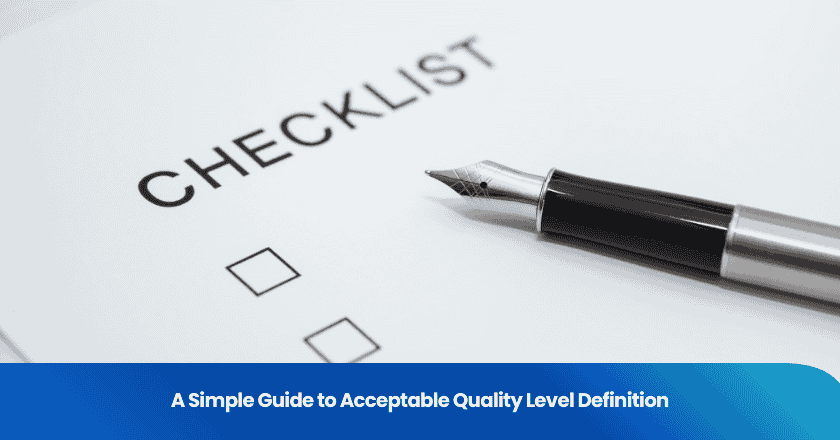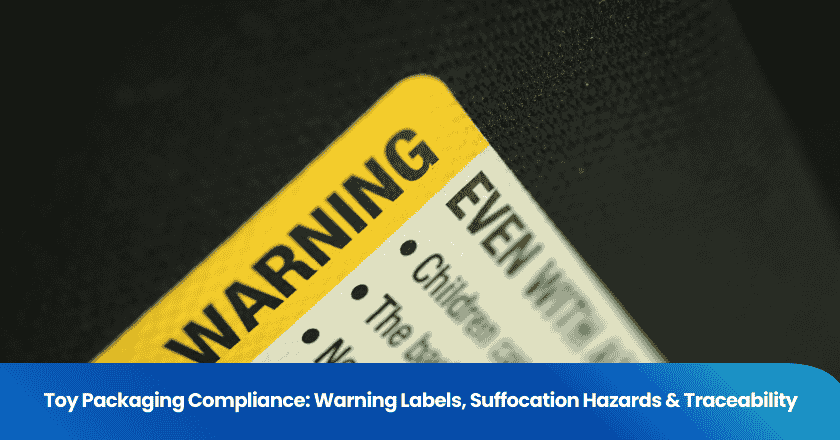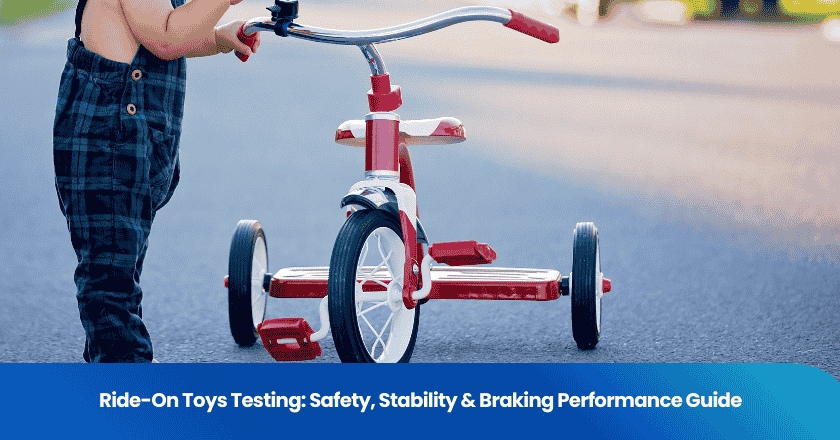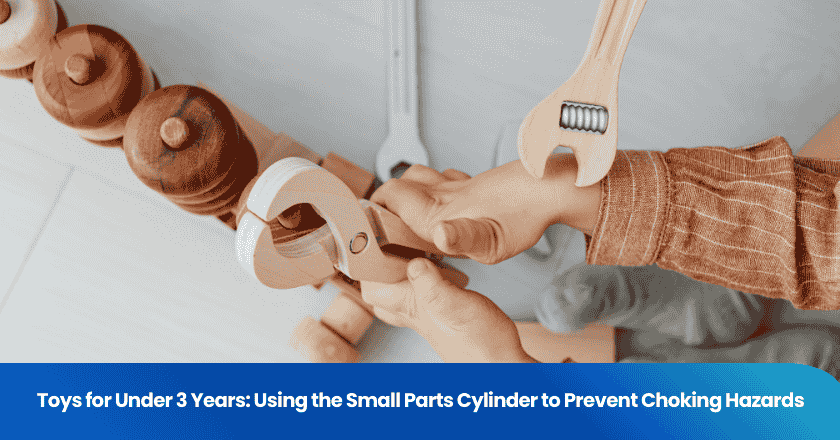
You need a clear understanding of the acceptable quality level definition to ensure your products meet consistent standards. The acceptable quality level sets the maximum percentage of defective items allowed during random sampling in quality inspections. You can see its key aspects in the table below:
| Aspect | Description |
|---|---|
| Definition | AQL specifies the maximum percentage or proportion of defective items allowed during random sampling in quality inspections. |
| Purpose | AQL ensures the batch meets predefined quality standards and guides decisions on whether to accept or reject a lot. |
| Usage | Inspectors use AQL in incoming quality control (IQC) processes to check items before they enter production or distribution. |
| Example | If the AQL is set at 2.5%, no more than 2.5% of the sampled items can be defective for the batch to pass inspection. |
AQL plays a vital role in quality control. It sets a standard for the maximum allowable defects in a sample, which helps you maintain product quality and build customer trust.
Key Takeaways
- Understand AQL as the maximum percentage of defects allowed in a sample. This helps you maintain product quality.
- Use AQL to make informed decisions on accepting or rejecting product batches based on clear standards.
- Categorize defects into minor, major, and critical to prioritize quality control efforts effectively.
- Follow a structured sampling process to ensure consistent and statistically valid quality inspections.
- Document inspection results to track trends and improve quality control practices over time.
Acceptable Quality Level Definition
What Is Acceptable Quality Level?
You encounter the acceptable quality level definition whenever you need to decide if a batch of products meets your quality standards. The acceptable quality level, often called AQL, sets the maximum number of defective items you can allow in a sample before you reject the entire lot. This concept forms the backbone of many quality control systems worldwide.
AQL is not a fixed number. You or a regulatory body determine it based on the type of product and the level of risk you are willing to accept. For example, you might set a lower AQL for medical supplies than for non-critical consumer goods. International standards, such as ISO 2859, provide clear guidance on how to use AQL in practice. Here are some common AQL levels you might see:
- AQL 1.0% for low-risk products, such as medical supplies.
- AQL 2.5% for general consumer products.
- AQL 4.0% for non-critical products where minor defects are acceptable.
The acceptable quality level definition has evolved over time. Originally, the term appeared in military standards like MIL-STD 105 E. Today, you find it in ISO 2859-1 and ANSI/ASQ Z1.4, where it is sometimes called the acceptable quality limit. The main goal remains the same: to set a clear upper limit for defects and protect consumers from poor-quality lots.
To understand the acceptable quality level definition more deeply, you should know its key components. The table below breaks down the main parameters you will encounter when working with AQL:
| Component | Description |
|---|---|
| Lot Size | The total number of items in a production batch, establishing the parameters for evaluation. |
| Sample Size | The number of items evaluated from the lot size, ensuring a representative appraisal. |
| Acceptance Number | The maximum count of defective items allowable for the batch to pass inspection. |
| Rejection Number | The threshold at which the batch fails due to an unacceptable level of defects. |
AQL aims to encourage suppliers to maintain a process average that meets or exceeds your specified quality standards. By setting this benchmark, you create a clear expectation for everyone involved in the production process.
Purpose in Quality Control
You rely on the acceptable quality level definition to make informed decisions during quality control. AQL serves as a critical standard by defining the maximum allowable defects in a batch. This benchmark helps you decide whether to accept or reject a lot based on objective criteria.
When you set an acceptable quality level, you establish a clear threshold for tolerable defects. This approach not only maintains product quality but also reduces the risk of defective items reaching your customers. As a result, you build trust and satisfaction among your clients.
AQL also provides an upper limit for the risk you take when accepting a batch. By using the acceptable quality level definition, you ensure that your products consistently meet established quality standards. This process supports your efforts to deliver reliable, high-quality goods and strengthens your reputation in the marketplace.
Tip: When you apply AQL in your quality control process, you create a structured and transparent system for evaluating product quality. This method helps you balance efficiency with the need to uphold strict quality standards.
How AQL Works
Defect Categories
You encounter three main defect categories during aql inspections. Each category helps you determine the severity and impact of defective items on your batch. The table below outlines these categories, their definitions, and examples:
| Defect Category | Definition | Example |
|---|---|---|
| Minor Defect | Slight deviation from specifications, still saleable. | A small scratch on the back of a monitor. |
| Major Defect | Makes the product unsaleable or likely to be returned. | A scratch on the front of a monitor. |
| Critical Defect | Could cause injury or death. | A phone with a battery that overheats. |
You use these categories to set clear standards for your final quality inspection. Minor defects usually allow for higher tolerance, while critical defects require immediate rejection of the entire lot. The table below further explains how each defect category affects your decision-making:
| Defect Category | Description |
|---|---|
| Critical defects | Might cause harm or render a product unsafe or unusable. Even a single critical defect can lead to rejection of the entire lot. |
| Major defects | Significantly reduce the usability or performance of a product but don't pose safety risks. A limited number of major defects might be acceptable depending on the sampling plan. |
| Minor defects | Don't affect a product's function or safety but might impact appearance or user satisfaction. A higher tolerance is usually allowed for minor defects. |
Sampling Process
You follow a structured approach when conducting aql sampling. This process ensures that your quality inspections remain consistent and statistically valid. Here is a step-by-step guide:
1. Identify the batch size. You determine the total number of units in the batch for inspection.
2. Select the aql level. You choose the acceptable standard based on industry norms and customer expectations.
3. Refer to the aql table. You access the table to find sample sizes that match your batch size and chosen aql level.
4. Determine the sample size. You locate the correct sample size using the aql table.
5. Conduct the review. You assess the selected sample against your quality standards.
6. Make decisions based on results. You analyze the findings to decide whether to accept or reject the batch.
You apply statistical sampling theory throughout this process. You define acceptance criteria and risk levels, which are essential in acceptance sampling. You use random selection methods to ensure unbiased results. You consider population size and confidence levels to maintain statistical validity.
Acceptance Criteria
You rely on acceptance criteria to decide if a batch passes or fails during aql inspections. These criteria specify the maximum allowable number of defects for each defect category. The table below shows how different aql levels impact your decisions:
| AQL Level | Type of Defect | Accept | Reject |
|---|---|---|---|
| 0.1% | Critical | 0 | 1 |
| 1.5% | Major | 7 | 8 |
| 4.0% | Minor | 14 | 15 |
You see that even one critical defect leads to rejection. You may accept a limited number of major or minor defective items, depending on your chosen aql level. You use these criteria to maintain high quality standards and protect your customers. You ensure that your final quality inspection aligns with industry requirements and customer expectations.
AQL in Practice
Real-World Applications
You see aql applied in many industries to maintain consistent quality and minimize defects. When you use aql, you set clear standards for acceptable levels of imperfections in your products. For example, in the chemical powder industry, you might set aql at 0.01% for contamination, 0.4% for particle size, and 1.0% for packaging defects. In the automotive sector, aql could be 0.1% for engine components and 1.5% for interior trim. Electronics manufacturers often use aql as low as 0.01% for safety-critical components. In apparel, aql might be 2.5% for construction defects and 6.5% for color variations.
| Industry | AQL Standards |
|---|---|
| Chemical Powder | AQL 0.01% for contamination, AQL 0.4% for particle size, AQL 1.0% for packaging defects |
| Automotive | AQL 0.1% for engine components, AQL 1.5% for interior trim |
| Electronics | AQL 0.01% for safety-critical components |
| Apparel | AQL 2.5% for construction defects, AQL 6.5% for color variations |
When you conduct aql inspections, you follow a structured process to document and report results. Typically, you:
1. Document test results from your inspections.
2. Check if the results meet the established test criteria.
3. Assess compliance with the set aql levels.
You often compile data from visual inspections and on-site testing into a single report. This report may include photos or videos as proof of compliance or non-compliance. You then forward the completed report to your client or quality team for review and next steps.
Note: Using aql in your sampling process helps you ensure that only batches meeting your quality standards reach your customers, protecting your reputation and supporting final product quality.
Common Industries
You find aql widely used in industries where quality and consistency matter most. Some of the most common sectors include:
- Textiles
- Electronics
- Automotive
- Consumer Goods
The table below shows typical aql levels for different types of defects in these industries:
| Industry | Minor Defects | Major Defects | Critical Defects |
|---|---|---|---|
| Textiles | 4% | 2.5% | 100% |
| Pharmaceuticals | ≤1% | N/A | 0% |
| Electronics | N/A | N/A | N/A |
You use aql in these fields to guide your sampling and inspection processes. By setting clear thresholds, you reduce the risk of defective products reaching the market. This approach helps you maintain high standards for final product quality and customer satisfaction.
Benefits and Limitations
Advantages
You gain several practical benefits when you use aql in your quality control process. The method helps you inspect large batches efficiently without checking every single item. You save time and reduce labor costs by focusing on a sample rather than the entire lot. This approach allows you to maintain high standards for the quality delivered to customers while keeping production moving smoothly.
By setting a defect limit, you can quickly identify batches that meet your requirements and avoid unnecessary delays.
The structured process of aql includes pre-production quality control, sample selection, defect categorization, and applying the aql tolerance. You monitor and address defects at different stages, which improves efficiency and reduces costs. Inspecting every item in a large batch often leads to production delays and higher expenses. With aql, you avoid these issues and keep your operations cost-effective.
The table below highlights the main advantages of using aql:
| Advantage | Description |
|---|---|
| Cost-efficient | Requires fewer resources compared to full inspection. |
| Time-saving | Provides quick turnaround for large orders. |
| Statistical Confidence | Offers a reliable assessment of quality while balancing speed. |
You rely on aql to balance speed and accuracy, ensuring that only batches meeting your standards reach your customers.
Limitations
You should understand the limitations of aql before relying on it completely. The method accepts a certain number of defects in each batch, which can sometimes result in inconsistent product quality. Customers may expect flawless products, so even a small number of defects can lead to dissatisfaction or returns.
Aql does not guarantee that every item in a batch meets your standards. You set a defect limit, but some defective items may still pass through the process. This risk increases if you choose a higher aql level or if your sample size is too small. You must carefully select your aql level to match your quality expectations and customer needs.
Note: Using aql helps you manage resources and maintain efficiency, but you should always consider customer expectations and the potential impact of defects on your reputation.
You need to balance the benefits of aql with its limitations to ensure consistent quality delivered to customers.
Best Practices for AQL
Implementation Tips
You improve your quality control process by following proven strategies for AQL implementation. Start by selecting the right sampling plan for your batch size and product type. Use clear acceptance criteria to guide your inspection team. Train inspectors to recognize different types of defects and understand the importance of objective evaluation. Maintain consistency in your sampling methods to ensure reliable results.
Tip: Document every inspection result. Record the number of defects found, the sampling method used, and any patterns you notice. This practice helps you track trends and identify recurring issues.
You should collaborate with your production team when defects appear. Work together to find the root cause and apply corrective actions. Communicate inspection results and corrective steps with all stakeholders, including suppliers and management. This transparency supports continuous improvement and strengthens your quality standards.
Avoiding Mistakes
You avoid common pitfalls in AQL inspections by preparing thoroughly and training your team. Lack of preparation often leads to missed expectations and critical issues. Ensure every inspector receives proper training to spot defects and follow objective criteria. Relying on personal judgment introduces subjectivity and can affect the accuracy of your results.
Follow a consistent sampling process to reduce confusion and improve reliability. Avoid switching inspection methods without clear justification. Balance technology with human oversight. While automated tools help, they cannot replace the judgment of a skilled inspector.
Here are the most frequent mistakes you should watch for:
1. Lack of preparation before inspections.
2. Insufficient training for inspectors.
3. Subjectivity in defect evaluation.
4. Inconsistency in sampling methods.
5. Overreliance on technology without human review.
You minimize misinterpretation of AQL results by counting defective items in your sample and comparing them to your established AQL level. Evaluate whether the number of defects falls within your acceptance criteria. Always document your findings and share them with relevant stakeholders. Implement corrective actions when necessary to maintain high quality standards.
You now understand that Acceptable Quality Level (AQL) sets clear standards for product inspections, balancing quality and efficiency. The table below highlights key inspection levels you can use:
| Inspection Level | Description | Sample Size | Use Case |
|---|---|---|---|
| Level I | Smallest sample size, low risk | n = 1 or 2 | Limited resources, low defect risk |
| Level II | Balanced approach, default for most uses | Moderate | Normal inspections, compliance checks |
| Level III | Most rigorous, largest sample size | Largest | High criticality, severe defect impact |
To deepen your knowledge, explore these helpful resources:
- This guide covers everything about AQL, including definitions and standards.
- Learn how to read AQL tables and design a quality control plan for your needs.
- Find answers to common questions, such as the importance of AQL and how sampling works.
Apply AQL principles in your quality control process to ensure consistent, reliable results.
FAQ
What does AQL mean in quality control?
AQL stands for Acceptable Quality Level. You use it to set the maximum number of defects allowed in a sample before you reject a batch. This helps you maintain consistent product quality.
How do you choose the right AQL level?
You select the AQL level based on your product type, customer expectations, and industry standards. Lower AQL levels mean you accept fewer defects, which is important for critical products.
Can you use AQL for all types of products?
You can apply AQL to most products, especially when you need to control defects in large batches. However, you should adjust your sampling plan to fit the specific requirements of your industry.
What happens if a batch exceeds the allowed defects?
If your inspection finds more defects than the AQL allows, you must reject the batch. You may need to rework, repair, or replace the products before they reach your customers.
Why do you need to categorize defects during inspection?
You categorize defects as minor, major, or critical to help you decide which batches to accept or reject. This process ensures you address the most serious issues first and maintain high safety and quality standards.
Grow your business with TradeAider Service
Click the button below to directly enter the TradeAider Service System. The simple steps from booking and payment to receiving reports are easy to operate.



